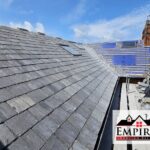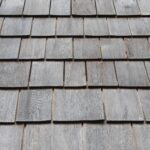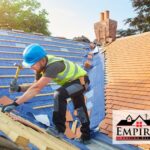What is the Best Roofing Material for a Flat Roof?
Flat roofs may be infamous for leaks and repairs but they remain as the first choice for most people and roofing companies thanks to their flexibility, even more common than pitched roofs. Obviously, the term flat doesn’t necessarily mean that these roofs are flat. They are only called as such due to the slight pitch they have at ½ or ¼ per foot. While this pitch offers adequate slope to facilitate water drainage, this can turn into an issue if there are structural flaws to the material used or if the material itself is poor.
This is why it is important to choose the best roofing material for a flat roof to ensure its lifespan and longevity. Good thing there are several available choices out there to help you pick the perfect material that will suit your needs and of course, your budget.
Some of the most common types of materials for flat roofing include the following:
Single Layer Membrane Roof
One of the most advanced technologies in roofing is the roof membrane. This is popular in the market in the names elastomeric or plastomeric roofing membrane. There are different categories of this single-ply membrane roof such as:
Neoprene or polychloroprene
Polymer-modified bitumens
Polyvinyl Chloride or PVC
Ethylene Propylene Diene Monomer or EPDM
Chlorinated polyethylene and Chlorosulfonated Polyethylene Sheet
The EPDM is the most in demand and common single-ply membrane material or also known as rubber roof. The material is the best choice of roofing material for both residential and commercial use for roofing construction.
The key benefit of a single-membrane roof is the fact that this is cheaper than other roof membranes. EPDM membrane with darker shade has better heat absorption ability, a feature that can drive up your energy bills.
Roof professionals install the thin sheet material of 0.03 inches then apply this as a single layer to the roof. Since this material for flat roof uses synthetic rubber and polymer, it gives the roof an excellent flexibility and elasticity.
This feature also makes it possible for EPDM to endure changes in temperature and weather and other impacts unlike traditional built-up roofs.
There are different ways of attaching these roof membranes. For instance, the roofers can lay this material partially or they can also hold it down with rock ballast, the structure required for supporting the weight of the roof. You can fully adhere the roof to its deck as well. It is also common to use adhesive for fastening the roof seams of EPDM and Neoprene. However, PVC roof seams are heat welded.
Built-Up Roofing
Built-up roofing is also among the traditional options for roofing materials and still remains a popular choice to solve issues with low-pitch roofing. It is an almost century old roofing material that can better handle roof challenges than asphalt shingles.
Modified Bitumen Roof Material
Modified bitumen roof material dates as far back as the 19th century. A replacement technology for built-up roofing, this material often uses BUR technology, adding several roof cap sheets and wear layers. The cap sheets include polymer for increasing the strength and life span of the material.












